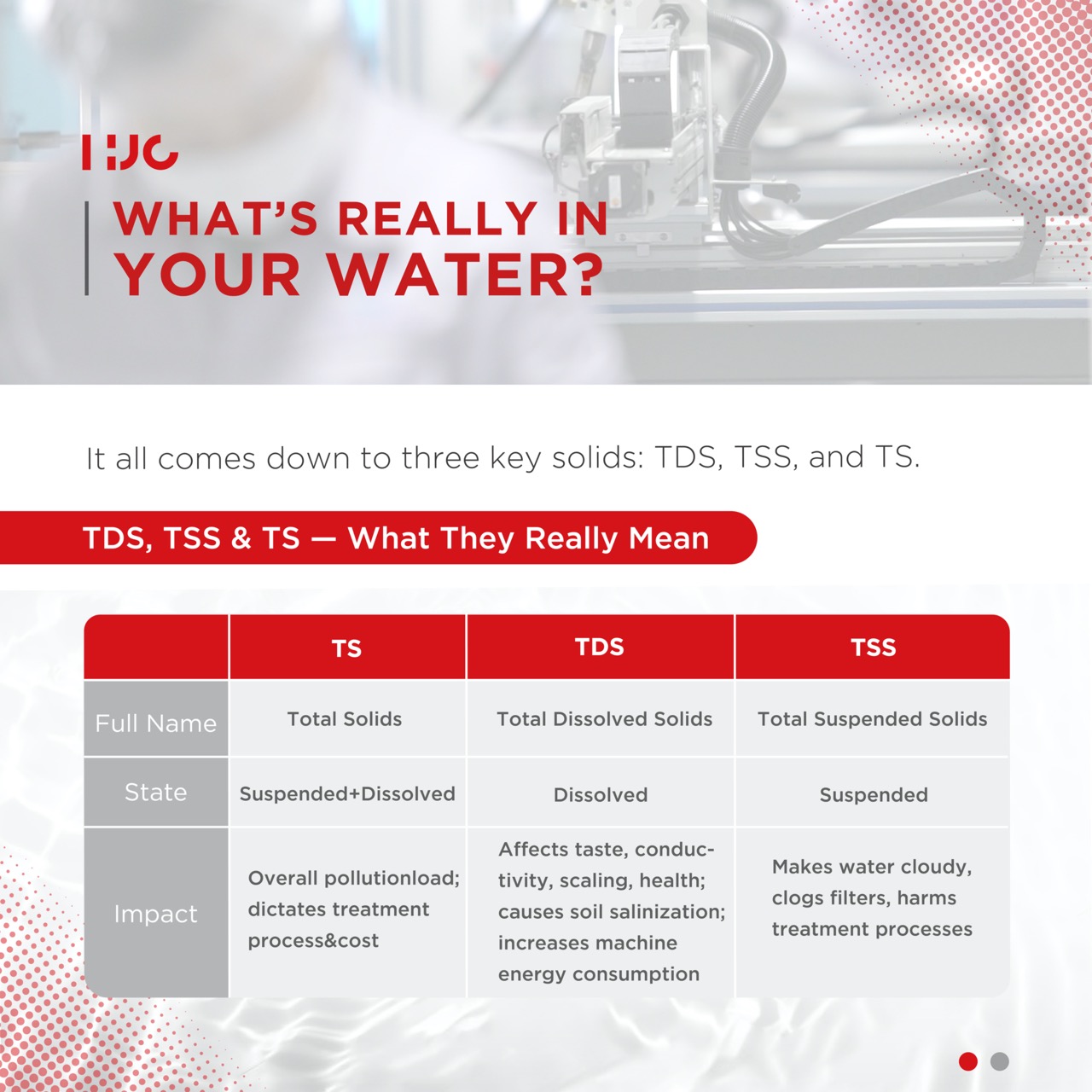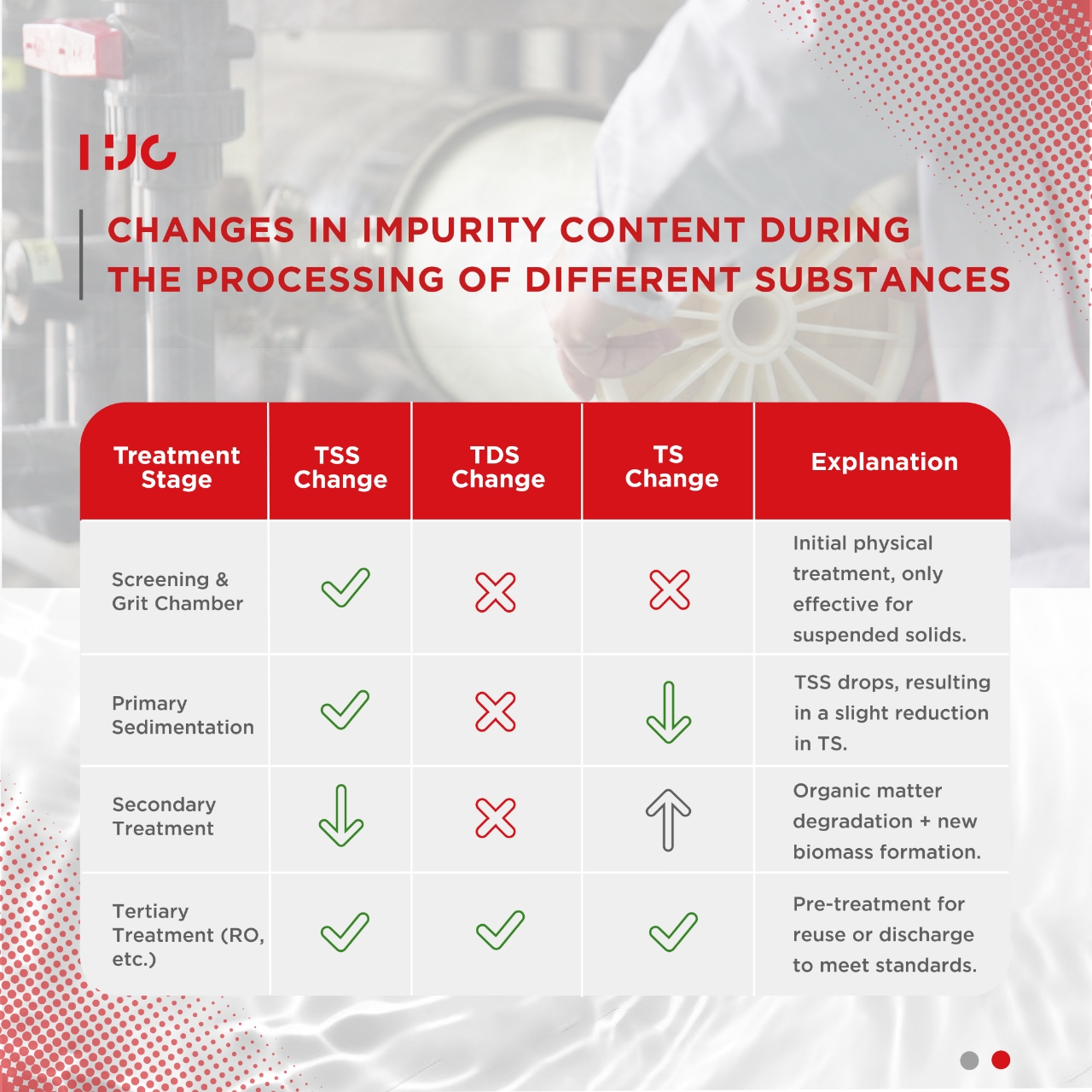TDS, TSS & TS — Three Key Solids You Shouldn’t Ignore in Your Water
We’ve all been tempted to taste rainwater as kids — curious about nature’s purity. But as we grow, we realize that rain often carries dust,
pollutants, and invisible contaminants.
Now consider this: we drink tap or filtered water every single day. It looks clear. It tastes fine. But do we really know what’s in it?
Clarity isn't everything. Clear water isn’t always pure, and murky water doesn’t always tell the whole story.
To truly assess water quality, we need to understand what’s dissolved, suspended, and left behind.
Three key solids that affect water quality: TDS, TSS, and TS
1. TS (Total Solids) — The Total Load in Water
This refers to all remaining solids after evaporating water at 105°C.
TS is the sum of TSS and TDS, as shown in the simple formula:TS = TSS + TDS
For example, if TS = 800 mg/L and TSS = 250 mg/L, then TDS = 550 mg/L.
Higher TS levels generally indicate more complex treatment processes and higher operational costs.
2. TSS (Total Suspended Solids) — The Visible Particles
This includes sand, silt, organic debris, and fine particles.
TSS contributes to turbidity, clogs filters, and can disrupt biological treatment processes.
Commonly removed through screens, grit chambers, or microfiltration.
3. TDS (Total Dissolved Solids) — The Invisible Ions
This includes sodium, calcium, magnesium, chloride, sulfate, and more.
TDS affects water taste, promotes scaling in pipes and appliances, and can compromise irrigation and crop health.
Typically removed through reverse osmosis or ion exchange.

How Much TDS Is Too Much?
When it comes to Total Dissolved Solids (TDS), the number matters — not just for taste, but for your health and the performance of your water
systems.
TDS levels in drinking water can vary widely:
0–50 ppm → Very low (typically RO or distilled water); may lack essential minerals
50–150 ppm → Ideal for hydration and taste
150–300 ppm → Considered good quality
300–500 ppm → Acceptable under BIS standards
>500 ppm → Hard water; treatment is often recommended
The World Health Organization (WHO) recommends maintaining TDS levels below 500 ppm for safe drinking water.
Maintaining the right TDS level isn’t just about taste — it plays a role in overall wellness. Moderate TDS supplies essential minerals, supports bone
health, and improves the taste and mouthfeel of water. However, excessive TDS can lead to scaling in pipes and appliances, contribute to high
sodium levels (which may increase the risk of hypertension), and in cases of elevated nitrate, pose a serious risk — especially for infants.

Who needs to care?
More people than you think:
- Baristas and tea masters depend on consistent water quality to craft the perfect cup.
- Farmers monitor TDS to prevent salt buildup and protect crop yields.
- Families should know that clarity doesn’t equal safety — what you don’t see might matter more.
- Engineers use TDS and TSS data to design efficient, long-lasting treatment systems.
- Informed consumers — like you — can make better choices when you know your numbers.
You can start by testing your water quality!
Let’s be more mindful — what we drink shapes our health, our soil, and our future. Knowing what’s in your water is the first step to making better
choices.
HJC RO membranes are engineered for performance — even in high TDS conditions.
From household taps to industrial lines, we help ensure every drop is safer, cleaner, and smarter.
Understand your water. Choose the right membrane. Start clean — with HJC.

